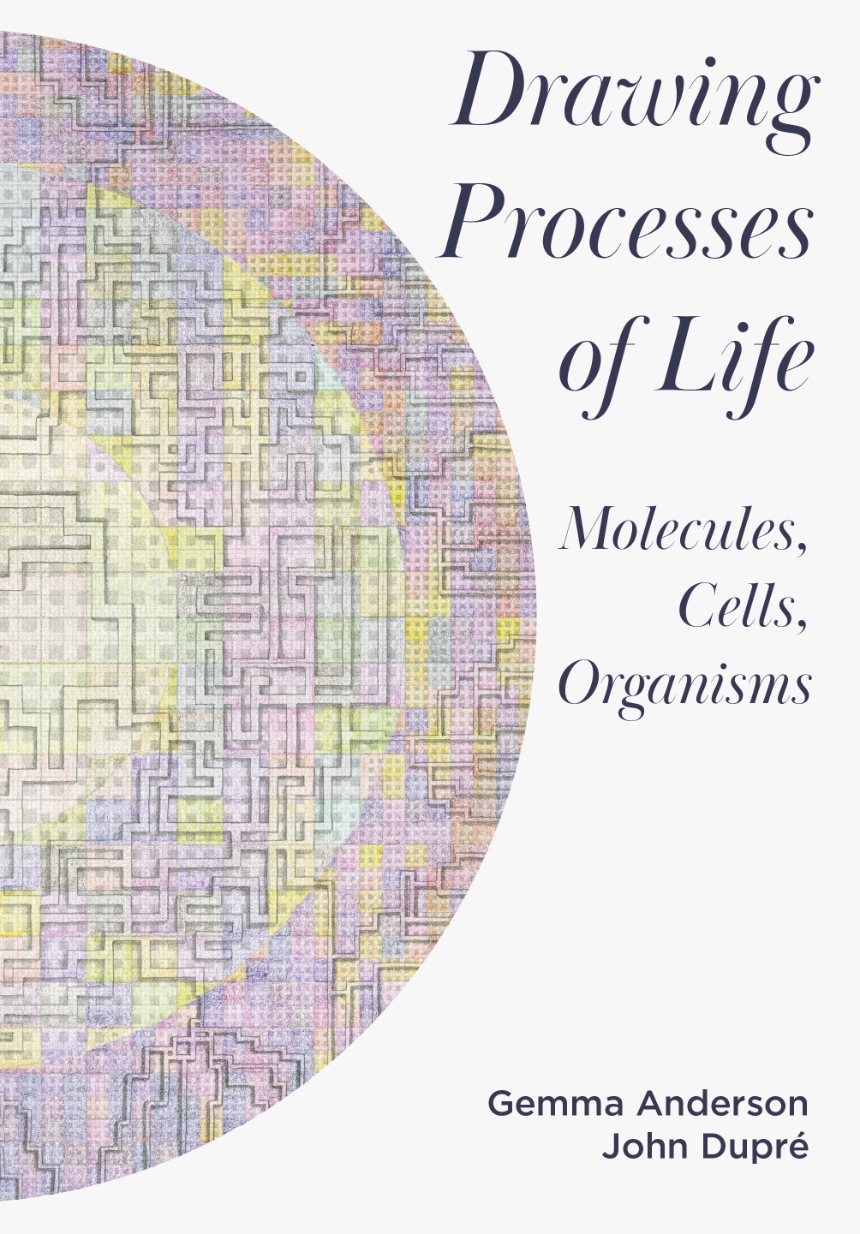How the challenge of depicting biological systems can generate productive questions for artists and scientists.
An artist sketching cell division faces a problem: what is the best way to visually represent a dynamic process? This anthology, edited by an artist and a philosopher of science, explores drawing as a way of inquiring into living processes at the molecular, cellular, and organismal scale. In doing so, drawing emerges as a tool for relaying and uncovering knowledge—a pathway for research, not an end result.
Incorporating drawing studies and contributions from scholars in the humanities and life sciences, Drawing Processes of Life addresses epigenetics, epistemology, and metamorphosis in insects, proteins, and other ever-shifting biological systems. A foreword by Scott F. Gilbert, a renowned evolutionary biologist and historian of science, affirms the promise of interdisciplinary collaboration between artists and scientists.
An artist sketching cell division faces a problem: what is the best way to visually represent a dynamic process? This anthology, edited by an artist and a philosopher of science, explores drawing as a way of inquiring into living processes at the molecular, cellular, and organismal scale. In doing so, drawing emerges as a tool for relaying and uncovering knowledge—a pathway for research, not an end result.
Incorporating drawing studies and contributions from scholars in the humanities and life sciences, Drawing Processes of Life addresses epigenetics, epistemology, and metamorphosis in insects, proteins, and other ever-shifting biological systems. A foreword by Scott F. Gilbert, a renowned evolutionary biologist and historian of science, affirms the promise of interdisciplinary collaboration between artists and scientists.
Table of Contents
Foreword, ‘Symbiotic Perspectives on the Processes of Biology and Art’, Scott F. Gilbert
Introduction, Gemma Anderson and John Dupré
Chapter 1: ‘Conrad H.Waddington and the Image of Organicism’ Katharina Lee Chichester, Humboldt University, Berlin
Chapter 2: ‘Drawing to extend Waddington’s epigenetic landscape’ Gemma Anderson, Johannes Jaeger and Berta Verd
Chapter 3: ‘Drawing as a Pragmatist Visual Epistemology’ Chiara Ambrosio
Chapter 4: ‘Drawing the Origami Embryo as a Stratified Space-Time Worm’ Gemma Anderson and Alessio Corti
Chapter 5: ‘Drawing the dynamic nature of cell division’ Gemma Anderson, James Wakefield and John Dupré
Chapter 6: ‘Drawing as intuitive mode for representing protein dynamics’ Gemma Anderson, Jonathan Phillips and John Dupré
Chapter 7: ‘Drawing out the (super)organism: Artistic intervention and the amplification of processes of life’ Heather Barnett
Chapter 8: ‘Mimicry, Adaptation, Expression’ Wahida Khandker
Chapter 9: ‘Metamorphosis in Images. Insect Transformation from the End of the Seventeenth to the Beginning of the Nineteenth Century’ Janina Wellmann
Chapter 10: ‘Flow, attend, flex: reintroducing a process-oriented approach to cell biological research’ James Wakefield
Chapter 11: ‘Forging New Biologies through New Art: An Afterword’ Sarah Gilbert and Scott F. Gilbert
Introduction, Gemma Anderson and John Dupré
Chapter 1: ‘Conrad H.Waddington and the Image of Organicism’ Katharina Lee Chichester, Humboldt University, Berlin
Chapter 2: ‘Drawing to extend Waddington’s epigenetic landscape’ Gemma Anderson, Johannes Jaeger and Berta Verd
Chapter 3: ‘Drawing as a Pragmatist Visual Epistemology’ Chiara Ambrosio
Chapter 4: ‘Drawing the Origami Embryo as a Stratified Space-Time Worm’ Gemma Anderson and Alessio Corti
Chapter 5: ‘Drawing the dynamic nature of cell division’ Gemma Anderson, James Wakefield and John Dupré
Chapter 6: ‘Drawing as intuitive mode for representing protein dynamics’ Gemma Anderson, Jonathan Phillips and John Dupré
Chapter 7: ‘Drawing out the (super)organism: Artistic intervention and the amplification of processes of life’ Heather Barnett
Chapter 8: ‘Mimicry, Adaptation, Expression’ Wahida Khandker
Chapter 9: ‘Metamorphosis in Images. Insect Transformation from the End of the Seventeenth to the Beginning of the Nineteenth Century’ Janina Wellmann
Chapter 10: ‘Flow, attend, flex: reintroducing a process-oriented approach to cell biological research’ James Wakefield
Chapter 11: ‘Forging New Biologies through New Art: An Afterword’ Sarah Gilbert and Scott F. Gilbert

